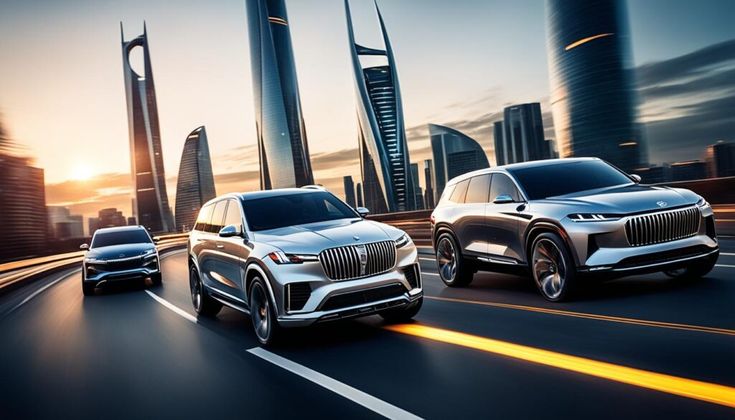As shifting customer preferences, innovative business models, and new entrants reshape the commercial vehicle sales landscape, OEMs must adapt to these changes.
Innovative GTM strategies are beginning to revolutionize the commercial vehicle (CV) industry. For instance, light commercial vehicle (LCV) companies are increasingly adopting direct-sales models instead of relying on traditional dealer networks.
More transformations are anticipated across various CV segments, driven by five core trends:
-
- Growth of omnichannel sales
-
- Emergence of new value pools and business models
-
- Increasing cost pressures
-
- Stringent regulations and the transition to zero-emissions vehicles (ZEVs)
-
- Entry of new competitors
These trends prompt two crucial questions: Why must CV OEMs adapt? And why now? After examining these issues, this article outlines emerging go-to-market models and guiding principles to help CV OEMs choose the best approach.
Why Change?
Three primary factors are driving the need for change in the commercial vehicle go-to-market landscape.
Omnichannel Sales are Becoming Standard
Just like in the B2C sector, B2B customers now expect an omnichannel experience that seamlessly integrates offline and online channels. According to our survey, B2B customers use a mix of traditional, digital self-service, and remote human interaction channels, with 35% rating e-commerce as most effective. Additionally, around 70% of respondents are willing to engage in large e-commerce transactions, spending up to RM500,000 on a single purchase.
B2B customers also demand greater individualization in their interactions with companies. Over half of the respondents in our survey indicated that they gained market share by investing in personalized marketing tactics, technology stacks, analytics, and prescriptive insights. This need for customization extends to products and services as well, with 85% of customers expecting the same or higher levels of vehicle customization in the future.
In the future, trucks will not be sold solely as base vehicles. OEMs will need to expand their offerings to include adjacent and new value pools like fleet management, uptime management, and charging infrastructure. These new offerings will be more complex, integrated, and expensive.
Innovative business models, known as XaaS (Anything-as-a-Service), are also set to scale up. These range from Transport/Mobility-as-a-Service to Charging-as-a-Service and Logistics-as-a-Service. Our data analysis suggests that by 2030, nearly 66% of global OEM medium-duty truck (MDT) and heavy-duty truck (HDT) profits will come from recurring life cycle services. These models represent a shift from one-time capital expenditure to recurring operating expenditures for customers.
The rise of new value pools and business models will necessitate changes in OEM sales strategies. OEMs will require new governance models, risk calculation capabilities, and steering mechanisms to manage these changes effectively. Successfully creating sales models that enable full control over the customer journey can help OEMs tap into new profit pools and capture a larger share of customer lifetime value.
Increasing Cost Pressure from Technological Change and New Entrants
Technological advancements, particularly in powertrain technology, stringent regulations, new offerings, and new market entrants are all contributing to increasing cost pressures. Adopting new go-to-market models can unlock return on sales (ROS) improvements through:
-
- Reduced Distribution Costs: Direct-sales models reduce distribution costs by creating scalable platforms across markets, bundling and automating activities traditionally performed at the dealer or market level, and consolidating networks. These cost effects are expected to be more pronounced in the LCV segment compared to MDT and HDT segments due to structural differences.
-
- Professional Revenue Management: New go-to-market models enhance professional revenue management through new offerings like XaaS, increasing cross- and upselling opportunities throughout the customer life cycle, central price steering, and improved conversion rates and loyalty.
Although it is early to predict the exact level of ROS improvements these new models will deliver, initial pilots in the passenger vehicle industry suggest significant potential gains.
Why Now?
The CV industry lags behind the passenger car industry in making future go-to-market decisions. However, the number of public announcements regarding go-to-market transformations in the CV industry is expected to increase significantly over the next 12 to 18 months due to two key trends:
Shift to Alternative Powertrains
The transition to ZEVs offers OEMs a unique opportunity to introduce new go-to-market models gradually, allowing them to learn and adapt. OEMs must shift to alternative powertrains to comply with stricter CO2 emission regulations and take advantage of new subsidies, such as the commercial clean vehicle tax incentives from Green Technology Financing Scheme in Malaysia. We project that by 2030, ZEVs will account for about 40% of LCV sales, 25% of MDT sales, and 15% of HDT sales globally. Similar shifts are expected in off-highway vehicles, with ZEV shares of 20-30% in construction and 10-20% in agriculture.
Entry of New Competitors
Over the past 24 months, more than a dozen new players have entered the CV industry, including BYD, C.A.M, Tesla and Maxus. These new entrants, unencumbered by legacy systems, are leading the way in new sales models, value pools, and business models. Their innovative go-to-market models offer financial benefits such as reduced distribution costs and professional revenue management, as well as a seamless, omnichannel journey for customers, potentially giving them a competitive edge over incumbents.
The Go-to-Market Shift in the CV Industry
While the CV industry shares some underlying trends with the passenger car industry, it has been slower to adopt new go-to-market models. Recently, however, the shift toward ZEVs and increased competition from new entrants has led to a rise in public announcements about go-to-market transformations.
There is no one-size-fits-all solution for go-to-market models. Companies must choose approaches that fit their unique circumstances and adapt to changing market conditions. Our analysis of incumbents and new entrants across CV segments reveals different go-to-market models based on sales approach and scope of offerings:
-
- Wholesale Only: Traditional model using dealers for sales and service.
-
- Hybrid Wholesale: Combination of wholesale and direct sales via key accounts, own retail facilities, or online.
-
- Agency: Direct sales through agents, potentially combined with direct sales.
-
- Own Direct Sales: Sales entirely managed by an OEM’s own sales force.
-
- Vehicle-Plus Offerings (Zura Charge’s model): Includes adjacent products and services like telematics and digital services.
-
- XaaS Models: Rely on recurring revenues from bundled products and services along the value chain
Guiding Principles for Selecting the Best Go-to-Market Model
OEMs must evaluate their starting position and aspirations to choose the most suitable go-to-market model. Three guiding principles can help:
Seamless, Omnichannel Customer Journey and Personalized Approach
B2B buyers increasingly expect an omnichannel experience with a mix of traditional, remote, and digital self-service channels. Companies can improve market share by up to 10% annually by providing a strong omnichannel experience and personalized interactions. OEMs should leverage direct customer access to build this experience, avoid fully integrating legacy IT systems, and obtain buy-in from partners early in the process.
Unlock New Value Pools with Broader Product Offerings
OEMs must expand their offerings to include new value pools, such as fleet management and uptime management. Recurring-revenue business models, like XaaS, allow customers to shift from capital expenditure to operating expenditures, reducing investment risks. To succeed, OEMs need to select and scale future offerings, build necessary capabilities, and thoroughly understand their customers’ needs and preferences.
Reduce Distribution Costs and Professionalize Revenue Management
New go-to-market models can reduce distribution costs by optimizing dealer networks and centralizing activities. They can also enhance revenue management through new value pools, cross- and upselling opportunities, and central price steering. OEMs must monitor transition costs and focus on long-term financial benefits.
The changes in on-highway and off-highway markets are transforming OEM go-to-market strategies. As new entrants continue to disrupt the CV market, established players must reconsider their go-to-market models to stay competitive and relevant.


